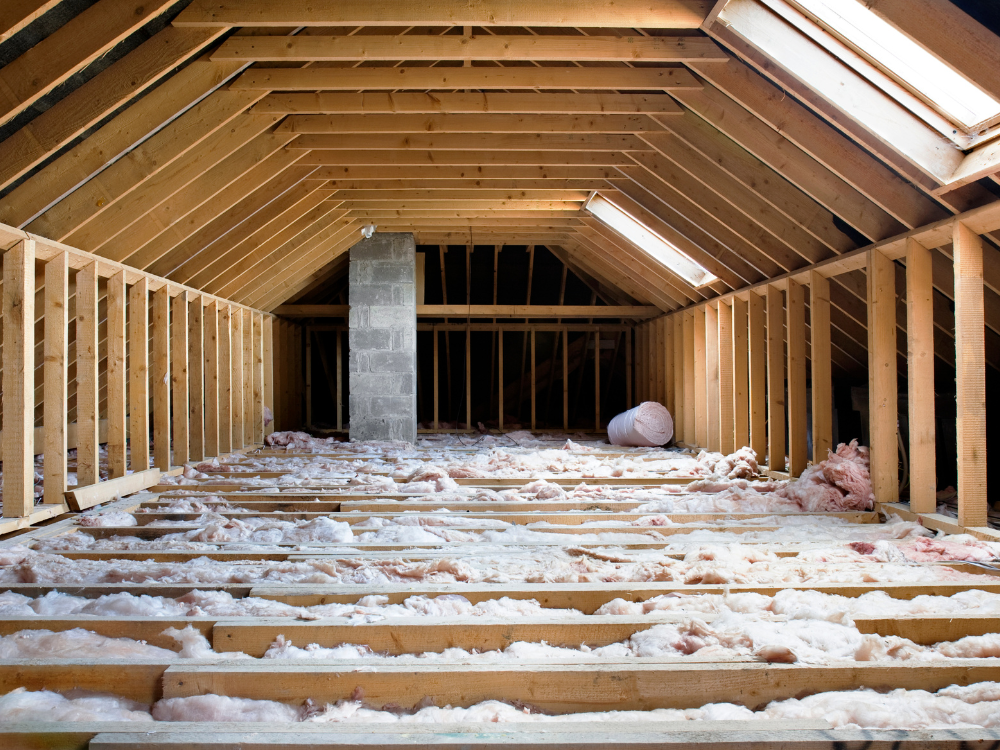Why add insulation to your home in November, or any month?
It's an easy step to take to save money on monthly heating or cooling bills, to keep comfortable in your space, and to claim a tax credit! Some areas are easier to assess and to insulate than others, so let's start there.
1. Easy Step: Attic
Hands down, the attic is the #1 most convenient area to add insulation to improve the comfort and efficiency of your home. You'll know if you're lacking any if the level is at or below the level of the floor joists. So, what level should be added if more is needed? Insulation levels are specified by R-Value. R-Value is a measure of insulation's ability to resist heat flow.
'You'll know if you're lacking insulation if the level is at or below the floor joists. So, what level should be added if more is needed? Insulation levels are specified by R-Value. The higher the R-Value, the better the thermal performance of the insulation. The recommended level for most attics is to insulate to R-38 or about 10 to 14 inches, depending on insulation type.
When adding insulation, you do not have to use the same type of insulation that currently exists in your attic. You can add loose fill on top of fiberglass batts or blankets. If fiberglass is used, make sure the fiberglass batt has no paper or foil backing; it should be unfaced. If you choose to add loose fill, hiring a professional would be wise, as this application requires use of a machine to blow it in.' -- Source: energystar.gov

2. Energy bills savings
Insulating your attic can help you save on your energy bills. According to the U.S. Energy Information Administration, insulating your attic could trim your heating bills by as much as 30% 1. The Environmental Protection Agency estimates that adding insulation in attics, crawl spaces, and basement rim joists can save the average homeowner 15% on heating and cooling costs, which is about $200 per year.
3. Tax Credit
You can claim the Energy Efficient Home Improvement Credit come tax time.
Thanks to the Energy Efficient Home Improvement Credit, you can now get a tax credit of up to $1200, depending on when your installation was installed. Source: Sealed.com
- If you added insulation to your home in 2022 (or before): You can receive a tax credit of up to 10% the cost of the materials.
- If you install insulation in 2023 (or after): The insulation tax credit covers up to 30% of the costs associated with installing insulation in your home—up to a maximum of $1,200 per year.
4. ROI
There's resale value to consider as well. If the time comes when you want to sell your home, you can disclose your newly insulated attic and may find increased interest and a bump in proceeds when an offer is accepted and closed.
Experts at Remodeling magazine have found that buyers are willing to shell out an extra $1,446 for a home with an insulated attic. Compared with the average cost of insulating—$1,343—that’s a 107.7% return on your investment!
5. Comfy Cozy
Nothing beats a home you're truly comfortable in.
A warm atmosphere beats all, where you huddle together because you want to!






